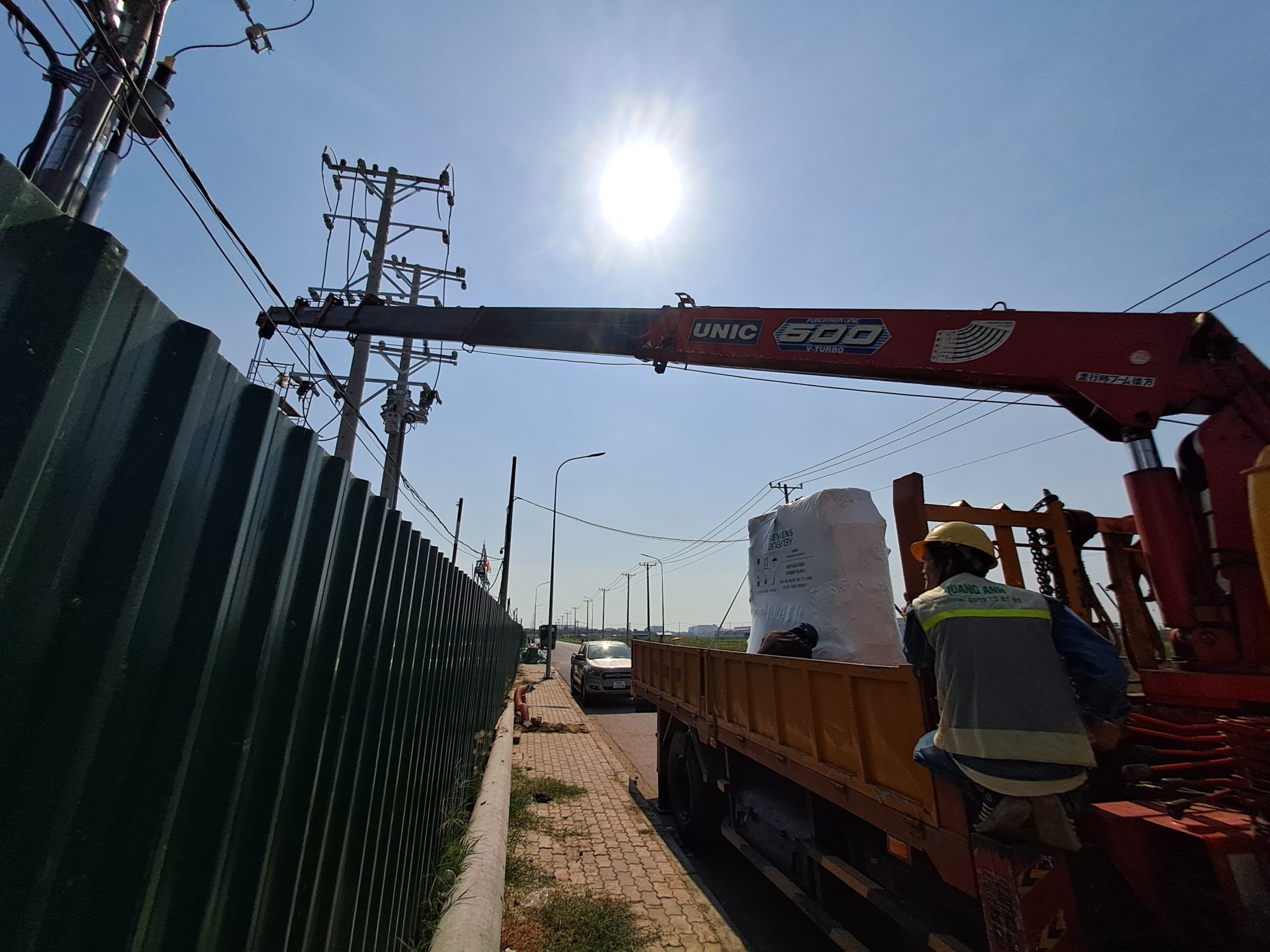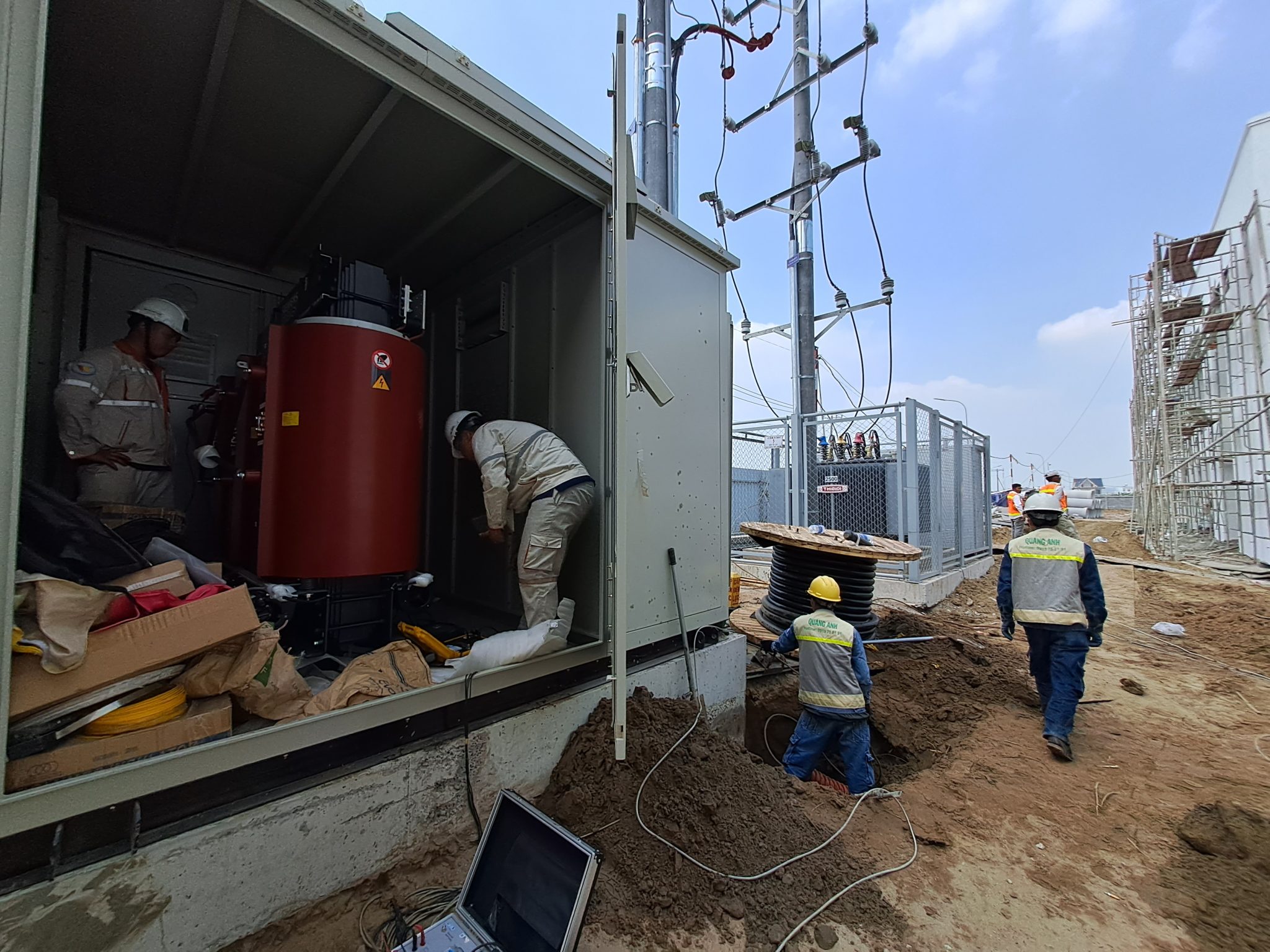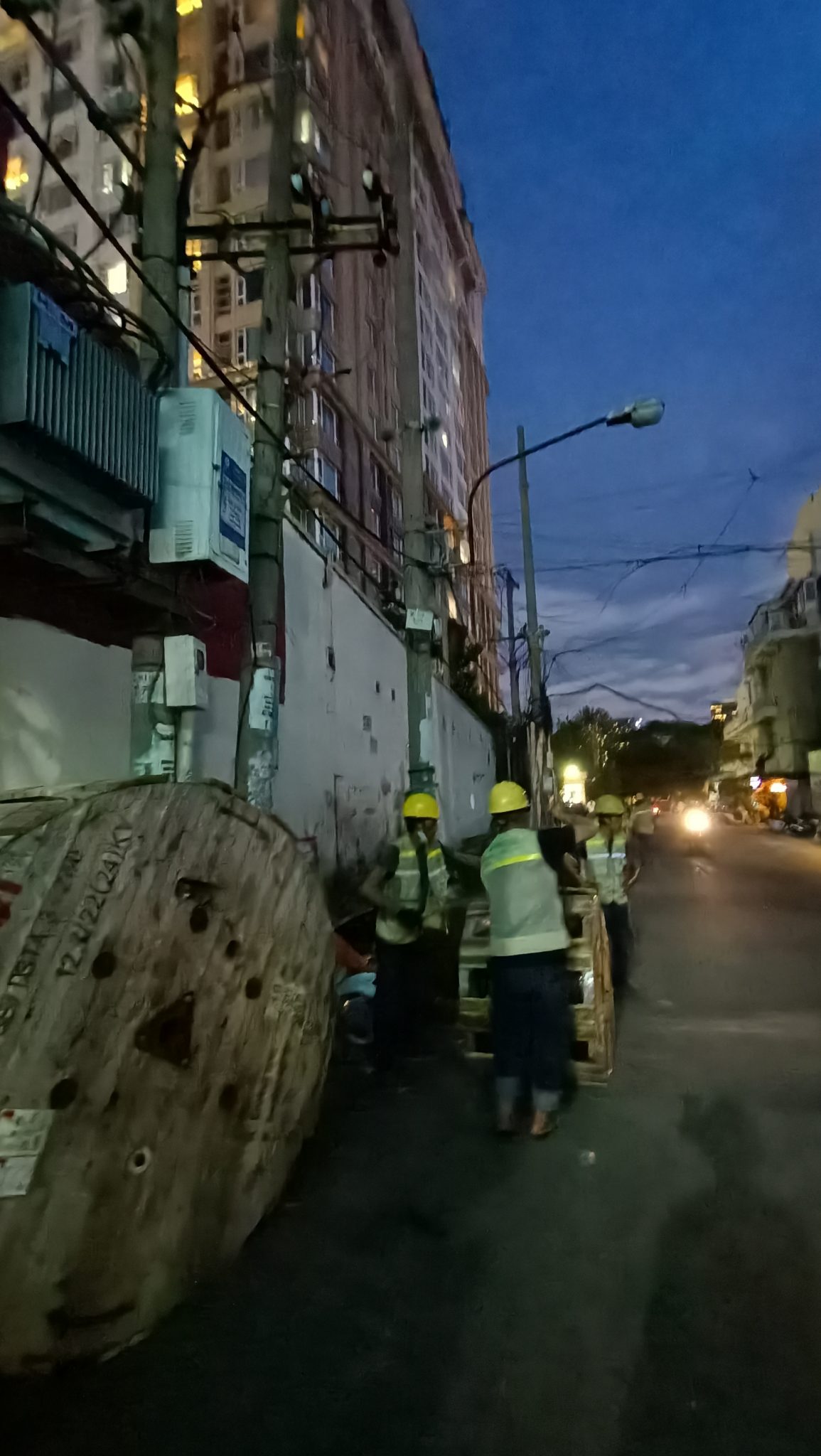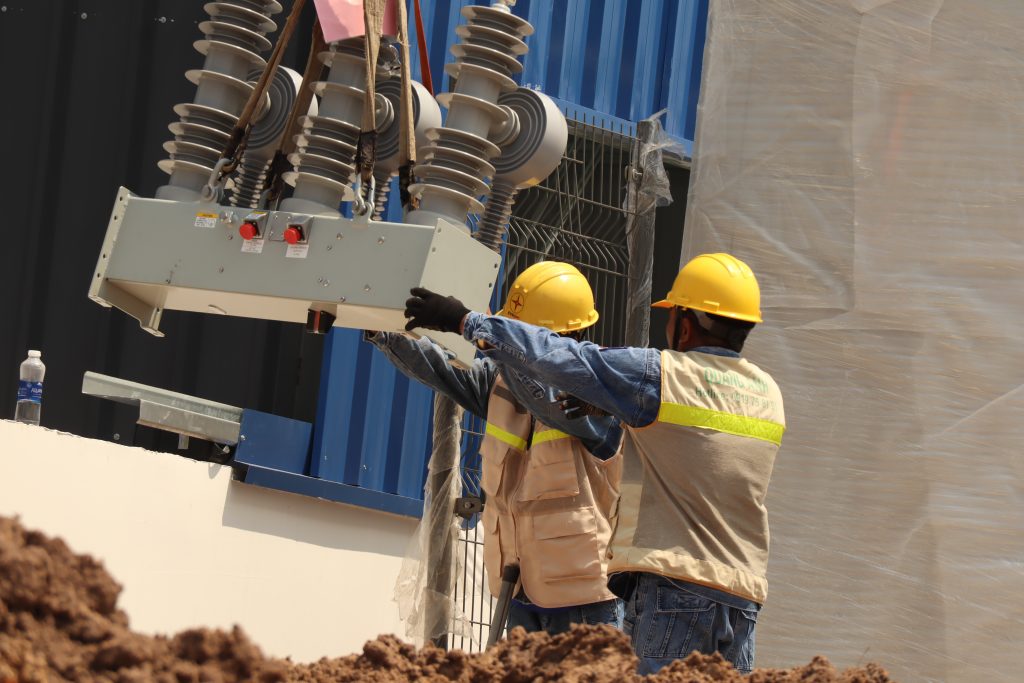News
HVAC System for FDI Factory in Vietnam: Energy Optimization and International Standards
The HVAC system for the FDI factory in Vietnam is developed towards energy optimization, environmental friendliness, and meeting international standards to satisfy the stringent demands of foreign investors.
International Standards Requirements and Energy Efficiency for HVAC
The HVAC system for the FDI factory in Vietnam must meet stringent international standards for energy efficiency and green environment. This not only ensures sustainable growth but also minimizes long-term operational costs. International conferences like COP26 have emphasized the importance of reducing emissions and efficient energy use, which requires the HVAC system to continually improve and perfect.
In the context of an expanding economy and the pressing need for a sustainable environment, international standards requirements and energy efficiency for HVAC have become one of the top priorities. Standards such as ASHRAE 90.1 play a fundamental role in defining design and operational requirements for the HVAC system to ensure optimal energy efficiency, thereby providing specific guidelines for energy saving.
The COP (Coefficient of Performance) is a measure of the energy efficiency of a heating or cooling system, offering insights into optimizing energy input and output. The higher the COP value, the more energy-efficient the system is. Additionally, the EER (Energy Efficiency Ratio) provides another perspective on system performance, especially significant given Vietnam’s hot and humid climate.
Performance standards are further refined through indices like IPLV (Integrated Part-Load Value) to measure performance under varying loads, and CSPF (Cooling Seasonal Performance Factor) to assess seasonal energy efficiency. The ESEER (European Seasonal Energy Efficiency Ratio) standard is also applied to accurately reflect HVAC performance under real conditions.
Regarding indoor air quality, the ASHRAE 62.1-2022 standard clearly defines limits for fresh air flow, CO₂ control, humidity, and other air pollutants. This ensures a fresh indoor environment, protecting user health and enhancing work efficiency.
Ultimately, by applying these international standards, the HVAC system not only meets energy efficiency requirements but also elevates indoor air quality, aligning with sustainable development and environmental protection goals.

Structure and Equipment in HVAC System for FDI Factory
Structure and Equipment in HVAC System for FDI Factory
The HVAC system for FDI factories often includes major components like the AHU air handling block, CDU hot block, and ductwork system. This is a crucial structure that helps efficiently condition air, ensuring high air quality according to cleanroom standards, especially in industries such as electronics, pharmaceuticals, or food manufacturing.
In the HVAC system of FDI factories, a complex structure consisting of numerous devices and coordinated operational mechanisms aims to tightly control temperature, humidity, pressure, and air cleanliness. Key components include AHU System (Air Handling Unit), where air drawn from outside undergoes temperature, humidity, and pressure treatment before being introduced into the production environment.
A crucial factor in this system is air filtration capability, with HEPA filters widely used to maintain air purity, particularly important for rooms requiring high standards like pharmaceutical or electronics manufacturing. These filters can remove bacteria and fine dust particles before air is pushed into cleanrooms.
To fully and effectively air condition, the HVAC structure also includes industrial refrigeration equipment, such as CDU hot blocks, tasked with ensuring suitable temperatures through a cooling system using high-capacity compressors. The heat exchange system, through hot or cold water coils, plays a role in adjusting the temperature of circulating air, meeting stable temperature needs for the factory.
The HVAC structure is implemented with insulated ductwork, helping adjust pressure, flow, and minimizing noise, ensuring energy efficiency. These ducts are often thermally insulated to prevent heat loss and maintain the required temperature. In industries demanding cleanliness like healthcare, the fresh air supply rate can be up to 100%, ensuring no recirculated air, maintaining the production environment at the highest standards.

HVAC Technology Trends and Use of Green Refrigerants
Current HVAC technology trends are shifting towards using green refrigerants like R-32, R-1234yf, and R-290 to replace traditional HFCs, due to their reduced environmental impact and high efficiency. This not only meets the sustainable development requirements of international corporations but also helps save long-term costs.
In the context of climate change and the increasingly urgent need to reduce carbon emissions, HVAC technology trends are witnessing a strong shift towards green refrigerants. Notably, substances like R-32, R-1234yf, and R-290 are gradually replacing traditional HFC compounds.
R-32 stands out with efficient cooling properties and a low global warming potential (GWP), helping reduce environmental impact while optimizing energy savings. Not only more sustainable, R-32 also provides high operational efficiency, making it a preferred choice in the air conditioning industry.
Similarly, R-1234yf is a familiar name in the automotive manufacturing and modern HVAC industry, boasting a very low GWP. This makes it recognized as an environmentally friendly refrigerant, aligning with the sustainable development goals being pursued by many companies.
Additionally, R-290, or propane, is naturally derived and does not deplete the ozone layer. It is encouraged for use in medium to small scale refrigeration systems because of its high efficiency and environmental sustainability.
Besides transitioning to green refrigerants, HVAC technology also leverages smart solutions like integrated IoT control systems and artificial intelligence (AI). This helps optimize real-time system monitoring, enhance automation, and save energy, thereby reducing operational costs and extending equipment lifetime.
The application of these advanced technologies not only helps businesses meet global green standards but also ensures long-term cost savings through more effective resource use.

International Quality Certification in HVAC Equipment
Achieving certification from reputable international organizations such as Eurovent Certified Performance is extremely important. Products without certification may consume more energy and not reach design efficiency, leading to increased operational costs. Choosing certified equipment ensures stability and reliability in the operation of HVAC systems.
International quality certifications play a crucial role in ensuring HVAC (Heating, Ventilation, and Air Conditioning) equipment functions according to international standards for safety, performance, and energy efficiency. Obtaining these certifications not only ensures that HVAC equipment operates safely and stably but also increases the chance of accessing the global market.
- ETL Certification: Granted by independent labs like Intertek, ETL certification confirms that HVAC equipment has undergone comprehensive testing for performance and safety, complying with current standards. This is important for ease of entry into international markets, demonstrating quality features and energy efficiency.
- EPA Certification: Issued by the United States Environmental Protection Agency, EPA certification commits that HVAC equipment or associated technicians comply with strict environmental protection regulations, such as waste management and emission reduction.
- NATE Certification: Certified by the American National Comfort Institute, NATE confirms that HVAC technicians are highly skilled, well-trained, and capable of efficiently and safely operating and maintaining HVAC systems.
- Role of Accrediting Organizations: National and international accrediting organizations like BoA and VACI ensure quality through multilateral agreements. This recognition helps reduce costs, testing time, and facilitates the competitiveness of HVAC products in the global market.
- Testing and Certification Process: Includes performance testing, electrical safety, energy efficiency, and equipment durability. Independent laboratories play an important role in issuing certification, ensuring compliance with international standards.
International quality certification acts as a “passport” helping HVAC equipment achieve economic efficiency, energy savings, and ensuring safety when circulating in the global market.

The HVAC system delivers optimal benefits by utilizing advanced technology that meets international standards, enhances energy efficiency, and supports sustainable development, thereby assisting FDI factories in achieving high operational efficiency and minimizing cost risks.
QuangAnhcons is committed to providing optimal HVAC solutions for FDI factories in Vietnam. Call +84 9 1975 8191 for detailed consultation.
QuangAnhcons provides design, consulting, and installation services for international standard HVAC systems, helping FDI factories in Vietnam optimize performance and ensure sustainability.

 Tiếng Việt
Tiếng Việt 简体中文
简体中文 Deutsch
Deutsch 日本語
日本語 한국어
한국어 ไทย
ไทย Русский
Русский Français
Français
